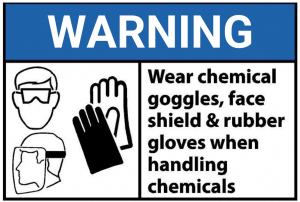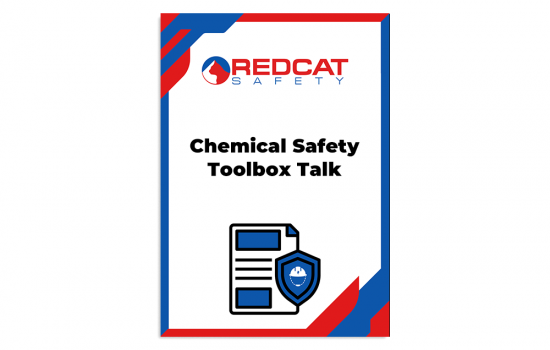About this Chemical Safety Toolbox Talk
This chemical safety toolbox talk gives some practical guidance on the use of chemicals that may have a consequential risk to the safety and health of workers and/or an adverse effect on the environment.
Some chemicals that are used in the workplace can have short and long-term health effects. It is very important to ensure all legal requirements and obligations are being met with regard to the handling, transportation and storage of hazardous chemicals and dangerous goods.
The intended outcome of the toolbox safety talk is to:
- Enable legal requirements and obligations to be met with hazardous chemicals and dangerous goods.
- Provide guidelines for the selection and use of chemicals that may have a consequential risk to the safety and health of workers.
- Have processes in place whereby chemicals to be used at the workplace must first have been risk assessed and authorized for use.
- Ensure an approved hazardous chemical register and relevant safety data sheets (SDSs) are available to personnel.
Chemical Safety in the Workplace
Chemical safety in the workplace is very important, as employees need to be aware of the dangers of chemicals and how to protect themselves. Employers need to provide adequate training and resources to ensure that their employees are safe.
Working with chemicals can be dangerous and employees need to be properly trained in chemical safety and be aware of the risks involved. There are a variety of hazards that chemicals can pose to workers, they can be toxic, flammable, corrosive, irritants and sensitizers.
There are three ‘general’ ways to reduce your exposure to hazardous chemicals:

- Substitution – which is the process of replacing a hazardous chemical with a less hazardous one.
- Engineering controls – which eliminate or reduce exposure to physical devices, barriers or equipment.
- Administrative controls – which are instructions, training and procedures.
What to Consider When Purchasing and Using Chemicals?
- Before purchasing any hazardous chemical, a risk assessment should be undertaken to assess the risks involved.
- A chemical brought into the workplace for the first time must be accompanied by an SDS.
- Personnel using the chemicals need to have the necessary training and competencies to enable safe use.
- Whenever a hazardous chemical is used, it must be in accordance with the SDS, the label and any other relevant instructions.
- Appropriate work area signage must be displayed (where necessary) to alert and warn of new hazardous chemicals and their risks.
- A supply of eyewash should be near the location where chemicals are used.
- A spill kit must be available if there is a risk of a chemical spill, or decanting takes place at the workplace.
When Using Chemicals What Do I Need to Do?
- Follow the instructions given to protect you from the risks associated with hazardous chemical exposure.
- Use personal protection equipment and avoid skin contact when exposed to chemical hazards.
- Maintain your personal protection equipment in good condition.
All personnel required to work with potentially hazardous chemicals or dangerous goods must be trained in their use and be aware of the potential risks.
Why Become a Member of Redcat Safety and Download this Chemical Safety Toolbox Talk?
- This chemical safety toolbox talk can help raise awareness about the potential hazards associated with working with chemicals.
- Toolbox talks about chemical safety help employers and employees understand and comply with regulations, minimizing the risk of legal issues or penalties.
After downloading this chemical safety toolbox talk you will be able to:
- Very easily edit and customize the template to create your own chemical safety toolbox talk.
- Apply your own style, format and brand to the toolbox talk.
- Use it in any industry or sector regardless of size or type of organization.
Availability and Use of this Chemical Safety Toolbox Talk
- This chemical safety toolbox talk template is accessible to you right now by clicking the ‘Become a Member Now’ button.
- The toolbox talk will be delivered to you in fully editable Microsoft Word format for immediate and full use in your business.
- There are no membership auto-renewals, contracts or ongoing costs.

If you can find HSEQ resources that are of better value than what your Redcat Safety Membership offers, we will REFUND YOU double the cost of your membership.

